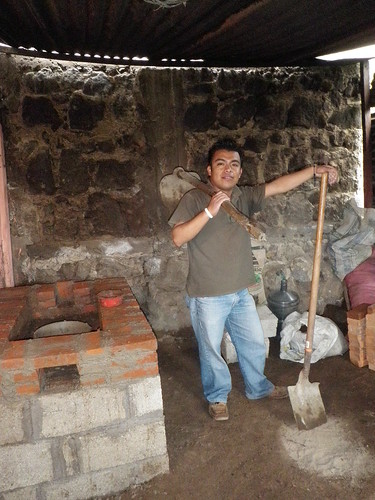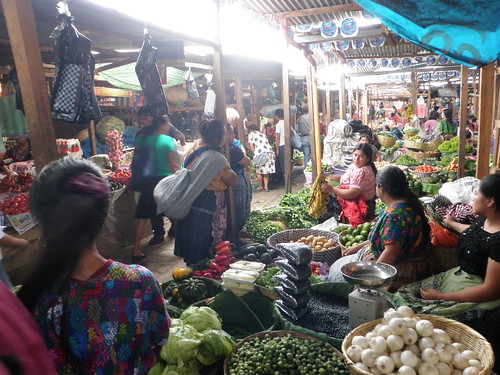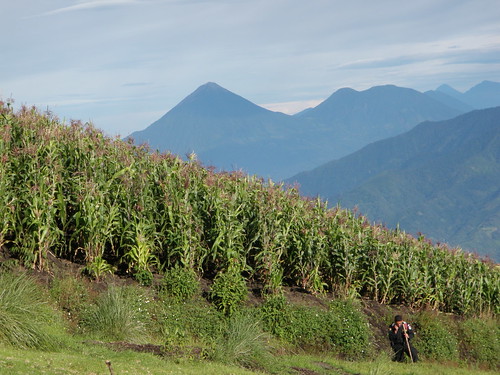“Hello, my name is Becky. I’m 26 years old. I would like that onion. How much does it cost? Thank you, have a nice day.”
And in the second week:
“The soldier distributes rice to the poor people. Then he goes to the bathroom and brushes his hair. He also forgives his sister.”
Sure, it’s nice to know the verb for distributing foodstuffs and supplies. But how often will I be distributing foodstuffs to poor people, and how often will I want to buy an onion? Additionally, when that wacky verb is among a list of hundreds of verbs that you’re supposed to eventually be in command of, it gets a bit overwhelming. But this is me griping and feeling a bit frustrated. I will admit that in that list of verbs there are the useful ones like “to want”, “to think”, “to know”, “to remember”, etc. And I’m starting to use them. About as elegantly as a two year-old, but communication is improving.
What else? Last Tuesday I went on a walk to the cemetery with my teacher. He showed me the tombs of a couple of dictators, as well as a bullet-hole-riddled part of the cemetery wall where the aforementioned dictators used to have people executed.
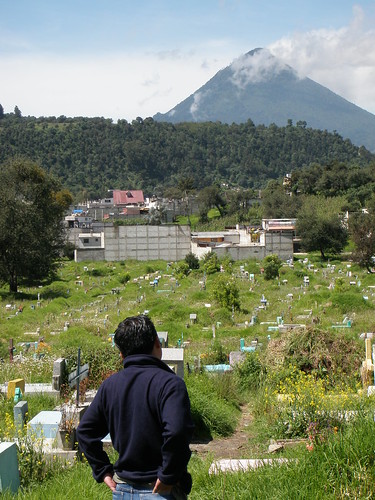
This photo was taken in the tomb- and statue-less half of the cemetery, where poor folk were buried. The volcano Santa Maria is in the background. It was quite peaceful.
I was planning on building stoves on Wednesday, but there isn’t any money to purchase materials for new ones at the moment and all of the half-finished stoves have been completed. So I studied and hung out with my host family instead.
On Thursday I helped out with the school dinner again. I baked brownies, which was no small feat given that the oven’s temperature dial is merely numbered 1 to 5. They turned out pretty tasty, although I don’t know how well they paired with the rest of the meal, which was chicken teriyaki and rice.
I went and saw Shrek 4 en español on Saturday. All I have to say about that movie is, “Meh”. What was interesting, however, was the straight-out-of-the-US food court in the mall the movie theater was in. There was a McDonald's, Taco Bell, Domino’s, Charlie’s Cajun Cookery, New China Express, Subway, Burger King, and a Pollo Campero. What you may not know is that the latter is a Guatemalan company that has since made it "big". Last I checked on their wiki page, they’re in seven different countries, have a headquarters in the US, and have recently partnered with Walmart. I haven’t seen this company in Denver yet, but I have a feeling I will shortly.
On Sunday I toured the coffee plantation "la Dicha" with some folks from school. It was really interesting. Here's a quick lesson: so, coffee grows on trees. The bean itself is inside a berry, which, when ripe, turns from green to yellow to red. For example:
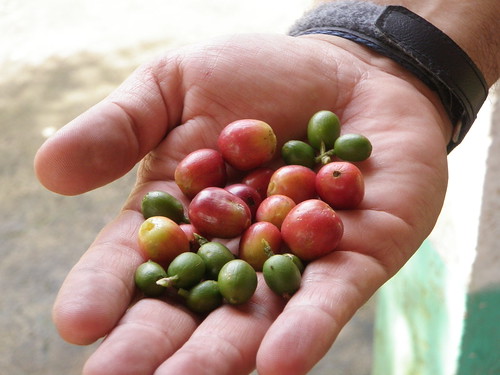
The berries are harvested by hand around October/November in Guatemala, and taken to the processing buildings on the plantation, where the berries are sorted, skinned and depulped, fermented, divided by weight, then dried. After the beans have been dried they're either roasted then distributed, or distributed "green" and roasted elsewhere. As for the quality of coffee produced on these plantations, it turns out that there are twelve grades. The finest, biggest, most flavorful beans (grades 1-3) are the most expensive and are exported to Germany and Japan. Grades 4-12 are sent elsewhere, like the US. The low-end beans are usually what is used for flavored coffee. The worst coffee, the beans that came from the small, unripe, green beans in the above picture, are made into instant coffee, which is (very, very unfortunately) what the majority of Guatemalans drink.
After the plantation tour went on a hike to a secluded lake at the base of Santa Maria. It involved, among other things: 1. Walking across a way-wobbly bridge with questionably sound wooden planks;
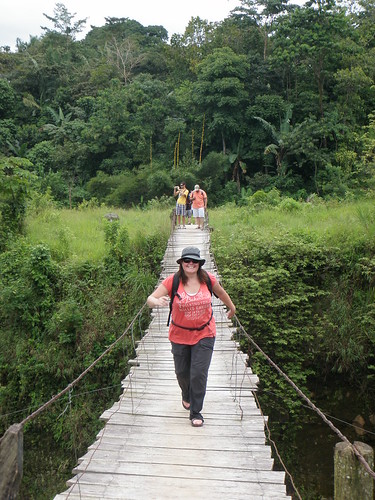
2. crossing a river that was pleasantly warm from being heated by the volcano;

3. hiking through an African savannah-esque prairie; and

4. ending up at a secluded (also heated) lake at the base of Santa Maria.
Unfortunately, it is the rainy season (also known as winter) here, so the impending afternoon rain was obscuring Santa Maria. Regardless, the hike was really pleasant. Along the way we encountered lots of villagers carrying insanely heavy things with their heads. Like large logs. For example:
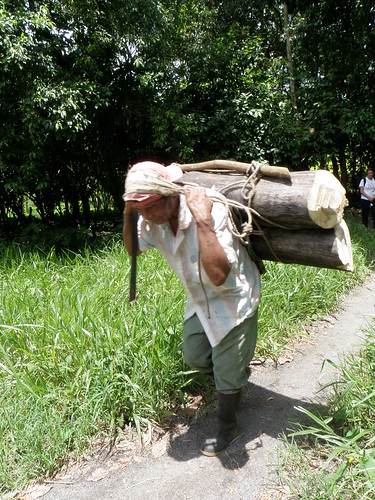
Other things they carried: Bushels of banana leaves. Several children. A couple of swaddled turkeys. Firewood. Bags of cement. I have a feeling this is why neck and back pain are common complaints in the clinic.
We also went ziplining that day, which was quite spiffy, but during this activity those in our party with any exposed skin lost a fair amount of blood to swarms of noseeums, also known as MotherFin' Bloodthirsty Gnats. Horrible.
More photos are posted on Flickr. For now I should get back to studying the past tense. I'll leave you with a photo of how we heat water down here:

